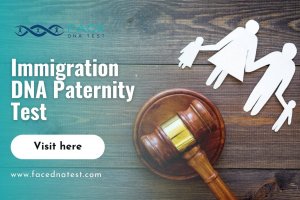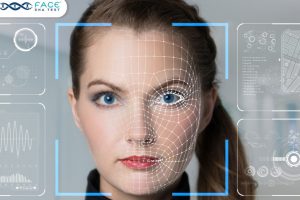Establishing paternity and the legal acknowledgement of a biological father’s link to a child is an essential first step to protecting the rights and well-being of the kid and any surviving family members. The procedure becomes more complex if the purported father is deceased. In these situations, proving paternity is crucial for inheritance, social security benefits, emotional healing, and legal considerations.
This article examines the procedures and factors to be considered while proving DNA testing for a deceased father.
Deceased Paternity Testing
A paternity test with deceased father is the testing of DNA from a deceased person to confirm the paternity of that alleged father to a young or grown child. Deceased paternity tests are pretty common, as many people desire to establish legal paternity even after an alleged father has passed away. These tests are most often performed to set a child as a legal heir to any assets of the alleged father, but we can perform deceased paternity tests for other reasons as well.
How Do you Get DNA from a Dead Person?
When the alleged father is deceased, we look to non-standard methods of paternity DNA testing. Without living buccal cells, you can bring in other DNA samples from a deceased person, such as blood, hair, or nail clippings. This is the preferred method for deceased paternity testing.
However, we recognize that gathering these DNA samples from a deceased person will not always be possible. If you cannot provide any such DNA samples from the deceased person, the next best option is to test the DNA of a close relative to the alleged father. The more immediate the relative to the suspected father, the more accurate the test results will be.
An example of a close DNA relative of the alleged father is the alleged father’s biological parents. In this case, we prefer to test both of his parents to increase the accuracy of the paternity test. However, trying only one of his parents can still be helpful.
If, for some reason, we cannot test the DNA of the alleged father’s parents- for example, they are deceased- then the DNA of another close relative can be used. But keep in mind that the accuracy of the paternity test will decrease the more distant the relative is from the alleged father.
How to Prove Paternity if the Father is Dead?
Step 1
Obtain a sample of the alleged father’s DNA (genetic material). Eye colour, blood type, and other physical characteristics may identify the possibility or plausibility that a man is a biological father, but these factors cannot alone establish paternity. Obtain a sample of the alleged father’s DNA from a tissue sample taken during medical treatment or testing while the alleged father was still alive.
Step 2
Obtain a DNA sample of the alleged father’s closest relatives if you have exhausted all the options for obtaining his DNA. DNA from the alleged father’s mother and father or other children belonging to him can establish paternity to a high degree of probability. Courts and government agencies will typically acknowledge paternity established in this way.
Step 3
Obtain a DNA sample of the child whose parentage is in dispute.
Face DNA specializes in blood and tissue testing to establish paternity. Typically, you will only have to wait two weeks for results.
Can a DNA test tell the Difference Between a Father and a Grandfather?
The paternity test with the deceased father can be used to identify the biological father of a child by comparing the DNA of the alleged father to that of the child. The child is said to be his if there is enough common DNA.
The similarity is tested by comparing several genetic markers, of which each individual has a unique mix. With this in mind, it can be tricky to carry out a paternity test between alleged fathers who are biologically related since parts of their DNA are similar. This will make it more complicated, but possible, to differentiate between the two and find out who the birth father is.
Possible fathers may also be related through a father-son relationship. The father will always pass 50% of his DNA to his child, and the grandchild will receive 25%. This will give higher chances towards a false positive – when the test is incorrectly marked as positive. The laboratory carrying out the test needs to be informed of the biological relationship between the fathers so that further analysis is carried out to ensure better results. The participation of both fathers is always ideal.
If the alleged fathers are brothers, they will have 50% of their DNA from their mother and 50% from their father. However, the DNA they receive from one parent may not be the same DNA profile that the brothers share between them.
How Long Can You Obtain DNA From a Deceased Person?
The length of time that DNA can be obtained from a deceased person depends on several factors, including the quality and preservation of the DNA sample, the environmental conditions in which the body was stored, and the type of DNA testing being performed.
In ideal conditions, such as a body well-preserved in a cold and dry environment, DNA can be obtained for many years or centuries after death. In some cases, DNA has been successfully extracted from mummified remains or ancient fossils that are thousands of years old.
However, in less favorable conditions, such as a body exposed to heat, moisture, or bacteria, the quality and quantity of DNA may degrade rapidly. In some cases, DNA may not be obtainable, or the DNA testing results may be unreliable due to contamination or degradation.
How to do a DNA Test without Someone Knowing
Paternity testing by Face DNA is a complex yet highly accurate process that helps establish the paternity of a person through DNA testing. By identifying the true biological father of a child, paternity testing provides clear evidence that can often be used in a court of law and gives peace of mind. One way is to do a DNA test for father or his first-degree relatives. Another method is to utilize non-standard samples, like hair clippings or a used ear swab, from the father. But for the court to recognize the validity of the results from a legal standpoint, a chain-of-custody form authorizing the procedure must be signed and processed.
A paternity test conducted without the possible father’s knowledge is called a “non-legal” test. DNA tests can be conducted without the father’s knowing, but the results are strictly for personal information and cannot be used in a court of law. An outside laboratory can help advise a person on the testing material/evidence that needs to be collected from the possible father and child. Once samples are collected, they are sent to the lab for analysis.
Paternity Testing Using Hair or Other Non-Standard Samples
While non-standard samples such as hair or a toothbrush from the possible father can be used for testing, items such as discarded ear swabs or used tissue are better. If non-standard samples are the only option, reputable labs will work with the individual to ascertain the best possible sample for their specific situation, like DNA testing father and child only. After the sample is received, the lab will generate the DNA profile of the possible father. If the sample is sufficient, this DNA profile is compared to the DNA collected from the child’s cheek swabs to determine paternity probability. Results from this process are typically available within 5 to 10 business days, but turnaround time may vary based on the quality of the sample.
Don’t Ruin Your Relationship By Misunderstanding.
Get Accurate Answers With Our Paternity Test!.
- Accurate
- Quick Result
- Private and Secure
- Affordable

Paternity DNA Testing When Father Is Deceased
For cases where DNA testing is done when the father is deceased, several options are available to help verify paternity. For the following relationship tests, involving the child’s mother increases the accuracy of the results.
Grandparent Test: When the father is deceased, this test can determine the statistical probability of whether or not the possible grandmother and grandfather are biologically related to tested children.
Sibling: This test determines whether two individuals share one or both parents. Although an indirect way to prove or disprove paternity, it’s one option when the father is deceased. This test can also be used for siblings DNA Test. The mother must permit full or half-siblings aged 16 and younger to participate.
Aunt-Uncle: Called avuncular testing, this is another option when the father is deceased because uncles and aunts share 25% of their DNA with their nieces and nephews.
Conclusion
Establishing DNA testing for deceased father is a delicate and complicated process that calls for careful consideration of various ethical, psychological, and legal aspects. Accurate results can now be obtained thanks to legal frameworks and advances in DNA testing, which also ensure the child’s rights and give families closure. The difficulties and intricacies of this process can be navigated with the assistance of legal experts and subject matter specialists, ultimately leading to an advantageous conclusion for all concerned.








Leave a Reply
Your email is safe with us.
You must be logged in to post a comment.